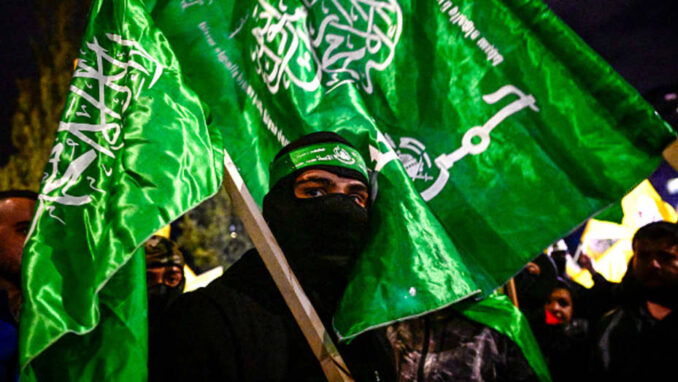

Hamas resistance fighter
The following is the full text of the ceasefire and exchange proposal that Hamas agreed to on May 7.


Hamas resistance fighter
Basic principles for an agreement between the “israeli” side and the Palestinian side in Gaza on the exchange of detainees and prisoners between the two parties and the return to sustainable calm.
The framework agreement aims to release all “israeli” detainees in Gaza, both civilians and soldiers, whether alive or otherwise, from all periods and times in exchange for a number of prisoners in “israeli” prisons to be agreed upon, and the return to sustainable calm, achieving a permanent ceasefire, and the withdrawal of “israeli” forces from Gaza, and reconstruction.
The framework agreement consists of three interconnected and interrelated phases, as follows:
Phase One (42 days): 1. Temporary cessation of mutual military operations between the two parties, and withdrawal of “israeli” forces eastward and away from densely populated areas to an area along the border in all areas of the Gaza Strip including Wadi Gaza – (“Netzarim” axis and Kuwait roundabout) as shown below.
On day 22 (after releasing half of the living detainees, including female soldiers), “israeli” forces withdraw from the central sector (especially the axes of “Netzarim,” Al-Shuhada, and Kuwait roundabout) east of Salah Al-Din Road to an area close to the border, dismantle all military sites and installations completely, continue the return of displaced persons to their homes in the northern Strip, and allow freedom of movement for residents in all areas of the Strip.
From day one, intensive and sufficient quantities of humanitarian aid, relief materials, and fuel (600 trucks daily including 50 fuel trucks, 300 for the north) are introduced, including the fuel necessary to operate the power station, trade, and equipment needed to remove rubble, rehabilitate and operate hospitals, health centers, and bakeries in all areas of the Gaza Strip, and continue this in all stages of the agreement.
In the sixth week, Hamas releases all remaining civilian detainees included in this phase; in return “israel” releases the agreed upon number of Palestinian prisoners from “israeli” prisons, according to the lists that will be provided by Hamas.
By the seventh day (where possible), Hamas will provide information on the number of living “israeli” detainees to be released in this phase. On day 22, the “israeli” side releases all prisoners of the Shalit deal who were re-arrested. If the number of living “israeli” detainees intended for release does not reach 33, the number will be completed from the bodies from the same categories for this phase; in return, “israel” releases all those arrested from the Gaza Strip after October 7, 2023, of women and children (under 19 years old) to be done in the fifth week of this phase.
The exchange process is linked to compliance with the terms of the agreement, including stopping mutual military operations, withdrawal of forces, return of displaced persons, and entry of humanitarian aid.
Phase Two (42 days): Announcement of the return to sustainable calm (cessation of military and hostile operations) and its implementation before starting the exchange of detainees and prisoners between the parties — all remaining “israeli” men in Gaza (civilians and soldiers) — in exchange for a number agreed upon of prisoners in “israeli” prisons and detainees in “israeli” detention camps, and complete withdrawal of “israeli” forces from the Gaza Strip.
Phase Three (42 days): 1. Exchange of bodies and remains of the deceased on both sides after locating and identifying them. 2. Start implementing a plan to reconstruct the Gaza Strip for a period of three to five years including houses, civilian facilities, and infrastructure, and compensating all affected under the supervision of several countries and organizations, including Egypt, Qatar, and the United Nations. 3. Ending the complete siege on the Gaza Strip.
Guarantors of the agreement: Qatar, Egypt, the United States, and the United Nations, May 5, 2024
This statement was lightly edited.
Trump’s 2024 campaign promised not to cut Social Security and proposed not to tax benefits.…
The New York Times broke the news on March 20, purportedly based on information leaked…
The following statement was published on March 21, 2025, on Resistance News Network. Forty former…
Venezuela: President Maduro demands respect for national identity and an end to the persecution of…
Por invitado Resumen Latinoamericano on 22 marzo, TeleSUR, Resumen Latinoamericano, 22 de marzo de 2025.…
New York City A rally and march on Billionaires’ Row has been called for 5…